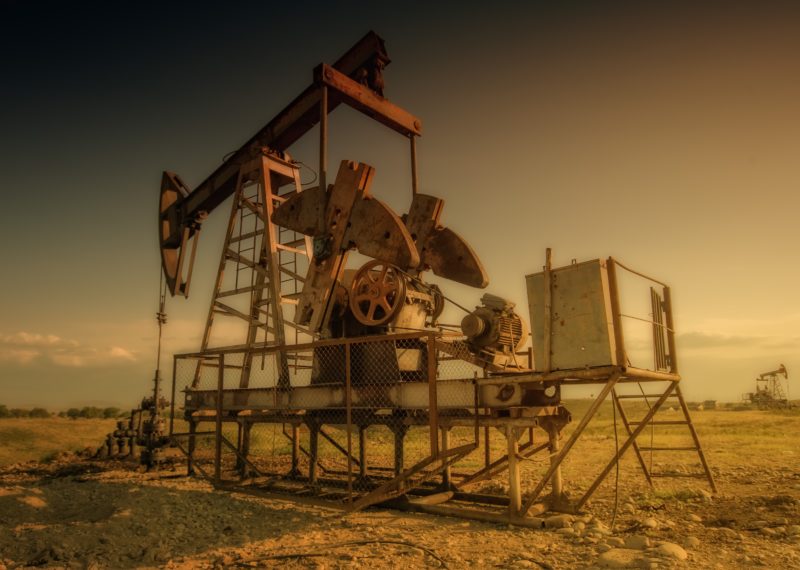In one of his first acts as president, Joe Biden paused new oil and gas leases on federal lands and waters. Companies can still drill areas they had previously leased, and they can still lease state and private lands. They just can’t stock up on new federal leases.
In response to this order, the oil and gas industry and its allies have thrown a fit. The American Petroleum Institute breathlessly warned of a shortage of “homegrown” oil and gas. The Western Energy Alliance funded an ad campaign that grossly exaggerated the potential job loss. And last week, 14 state attorneys general piled on by filing suit, calling the move “reckless.”
All of this kvetching represents an acute form of denial about the impact of Biden’s drilling policy and the future of oil and gas.
The pause, which is temporary, is expected to have little effect. Federal lands account for just a fraction of U.S. oil and gas production, and because of the delay between leasing and drilling, Biden’s order won’t affect production until next year. Even then, it will only blunt oil output by 100,000 barrels a day, according to the Energy Information Administration. Production is still projected to reach 12 million barrels a day in 2022, a near all-time high.
Oil and gas companies are currently sitting on 23 million acres of unused federal leases, an area roughly the size of Indiana. That’s enough to last the industry another 10 years, by one estimate. And 10 years might be all it needs. Because in the long run, the problem for oil and gas companies isn’t finding places to drill. It’s being able to compete with cheap renewable energy.
Over the last decade, the cost of wind turbines, solar panels and batteries fell off a cliff. Renewables are now generally as cheap or cheaper than natural gas. And this year, wind, solar and batteries will account for around 80 percent of new power capacity, dwarfing additions from gas. For this reason, an analysis from Morgan Stanley suggests that we have nearly reached peak gas in the United States. At some point in the next few years, it will be cheaper to build new wind farms and solar arrays than to keep the lights on at aging gas-fired power plants, and that will be the beginning of the end for natural gas as a power source.
At the same time, it’s possible that we have already reached peak oil, according to an analysis from BP, an oil company. Repeated coronavirus lockdowns have hurt demand for fuel. And while the economy will eventually recover, and a lot of people will head back to the office, they will do so at a time when EVs are ascendant. Electric cars are already generally cheaper to own than comparable gas-powered cars, thanks to savings on fuel and repairs, and soon they will boast a smaller sticker price as well.
It’s not just new power plants and cars that pose a challenge to fossil fuels. Emerging technologies threaten every product made from oil and gas. Induction stoves will render gas burners unnecessary. Heat pumps will make boilers obsolete. Bigger, more powerful batteries will give rise to electric freight trucks and obviate the need for diesel. Biofuels will allow jet airplanes to kick their oil habit. Even plastics, made from fossil fuels, will lose ground to plant-based alternatives.
Oil and gas companies aren’t going out of business overnight, but they are approaching their twilight years. Even if we do nothing to address climate change, global demand for oil will decline, according to a new analysis from Bloomberg New Energy Finance. Demand for gas in power plants will also fall. The industry will only be kept alive by demand for gas in buildings.
If we do as the science demands, however, and rapidly phase out fossil fuels, we will be all but done with oil and gas by the middle of the century. Given humanity’s general reluctance, thus far, to tackle climate change at the scale needed, this might feel unlikely. But the politics of climate change are starting to shift.
2020 saw the biggest-ever California wildfire, the biggest-ever Australia wildfire, and the most named storms in the Atlantic. It also saw the election of a U.S. president who ran on a $2 trillion plan to tackle climate change.
California is now aiming to phase out cars that run on oil by 2035. The United Kingdom set the same goal for 2030. Norway, a reliable overachiever when it comes to EVs, is aiming for 2025. And, while oil and gas companies might take comfort in projections showing rising demand for gas in buildings, a growing number of U.S. cities are banning gas hookups in new construction projects, effectively poking holes in the industry’s last remaining life raft.
The biggest challenge for oil and gas companies isn’t too little supply. It’s too little demand. So why is the industry up in arms about Biden’s pause on new drilling leases?
It’s hard to say. Some companies, like Exxon and Chevron, are betting that as developing nations grow larger and wealthier, they will drive greater demand for fossil fuels. In that scenario, companies will need to get their hands on all the oil and gas they can. But analysts and investors are skeptical of the promise of endless growth.
There may be a more simple explanation for why the industry is so resistant to the pause on new leases, one that has nothing to do with economics or policy. Oil and gas companies may simply be raging against the dying of the light. Since the days of Standard Oil, these firms have been some of the richest and most reliably profitable on the planet. That is starting to change, and the industry knows it. These companies can’t stop the inevitable shift to clean energy, but they can refuse to go down without a fight. That means resisting every policy change, however inconsequential.
Jeremy Deaton writes for Nexus Media News, a nonprofit climate change news service. You can follow him @deaton_jeremy.


